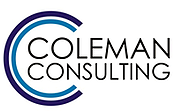Coleman Consulting can perform air quality testing and monitoring for the presence of asbestos in the air – at your home or in the workplace.
Static monitoring involves positioning monitors at fixed points in the area undergoing sampling.
Air monitoring involves drawing air through a filter so that airborne particles are collected. The filter is then examined under a microscope and the fibre concentration is calculated.
The material analysis is carried out in compliance with Guidance Note on the Membrane Filter Method for Estimating Airborne Asbestos Fibres 2nd Ed. [NOHSC:3003(2005) by an accredited IANZ laboratory.
Air sampling may form part of the procedure used to monitor asbestos in buildings or other structures.
Clearance sampling has received the greatest attention but it may also be useful to perform:
Background sampling to establish the conditions that exist before work is commenced;
Leak testing to check the integrity of the enclosure deployed for removal or encapsulation activities; and
Reassurance sampling - sampling after the enclosure has been removed.
Personal exposure monitoring - Used to assess the levels of worker exposure.
In order to achieve a site reoccupation and clearance certificate it may be necessary to carry out a visual inspection, swab testing, air-monitoring or all three depending on the type and extent of contamination. This would normally form part of a four stage process which would also include a desk-top study in order to ascertain the suitability of the methodologies used in the removal.
All clearance testing is carried-out in compliance with the WorkSafe New Zealand Position Statement on Asbestos Clearance Procedures issued April 2016 (to be reviewed in 2018).
Coleman Consulting implements a site set-up fee per site and a cost based on the number of monitors required.

